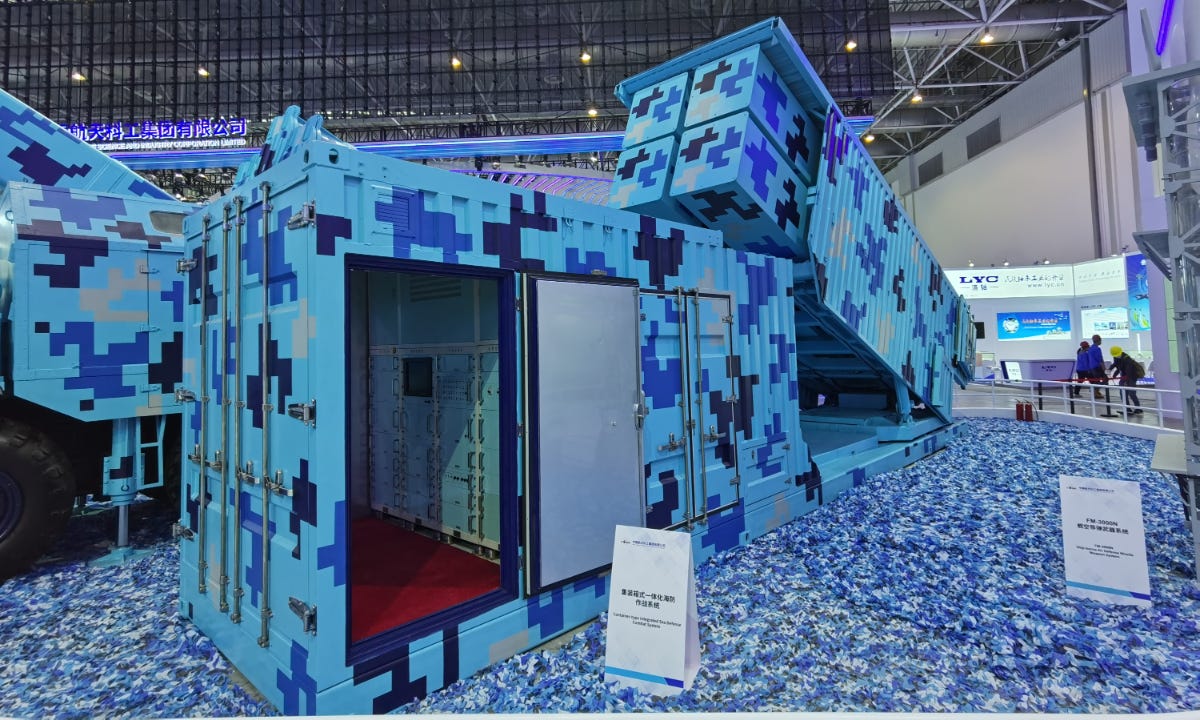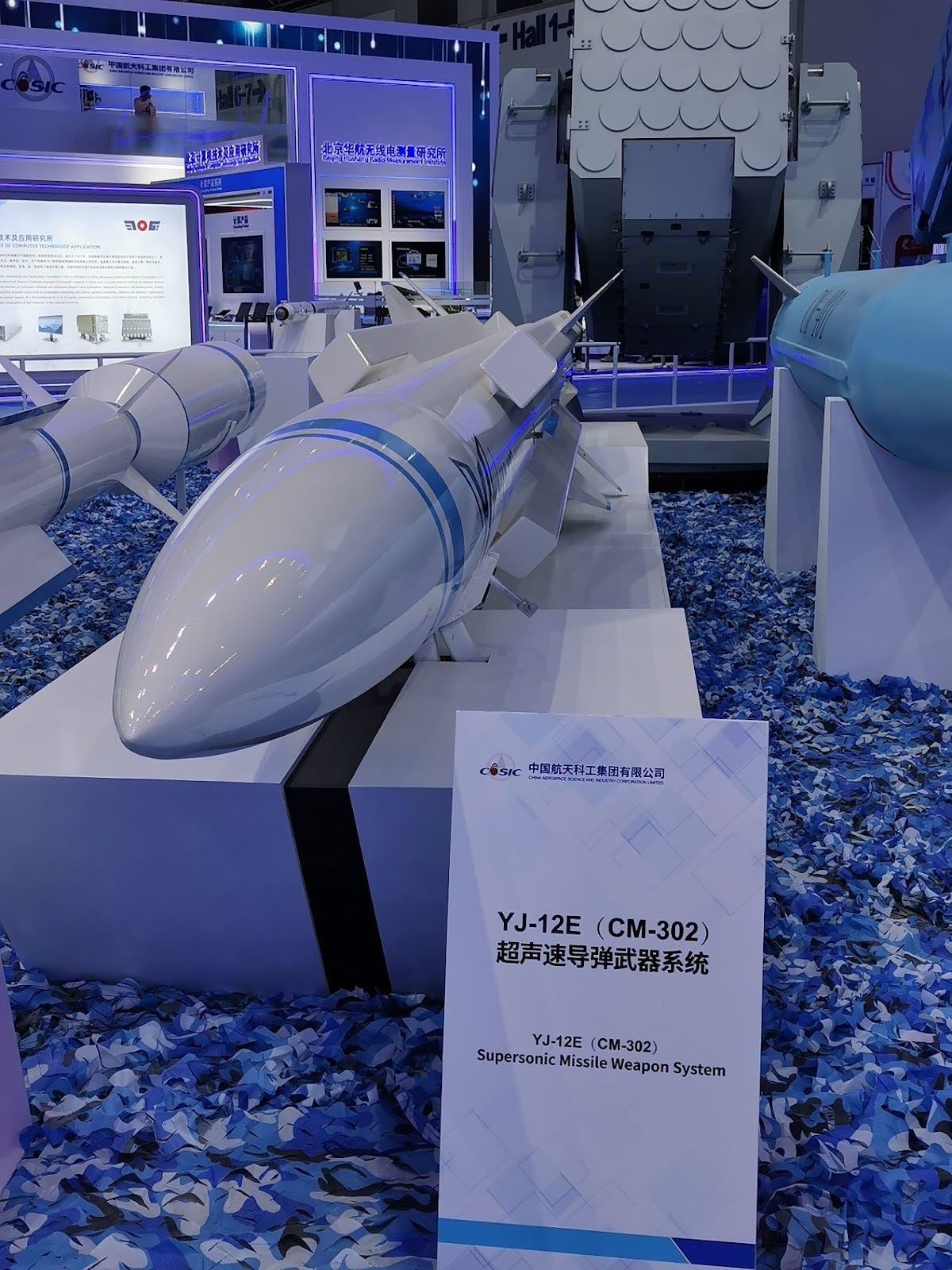#36 - China's Container-launched Cruise Missiles
巡航导弹 - Xun2hang2 Dao3dan4 - Cruise Missile
Hidden Threat
In 2022 China unveiled its newest cruise missile platform dubbed the “Container-type Sea Defense Combat System” (CSDCS, 集装箱式一体化海防作战系统). This is a containerized system akin to the Russian “Club K” and is an update to similar Chinese systems introduced in 2016. There is no evidence that earlier versions of the CSDCS were ever fielded to the PLA. The system payload is disguised in a standard shipping container and can be loaded onto a civilian container ship. The CSDCS is manned by a crew of four, does not require any external support, has internal power for all onboard systems, and supposedly emits no signals, as the systems for receiving targeting information are passive/downlink only.
The PLA is likely to employ the CSDCS by integrating it into the Chinese battle network. Sensors in the network such as aircraft, satellites, radar, and other systems could transmit targeting information to the CSDCS, which would then be able to fire accurately at US ports, warships, logistics nodes, and aircraft.
Missiles
According to interviews with the manufacturer (CN), China Aerospace Science and Industrial Corporation (CASIC), the CSDCS can carry up to four cruise missiles. These include, but are not limited to the YJ-12E supersonic Anti-Ship Cruise Missile (ASCM), YJ-83 medium range subsonic ASCM, the YJ-62 long-range subsonic ASCM, the PL-16 anti-radiation CM, and the YJ-18E supersonic ASCM.
The supersonic speeds of some of these missiles means they are far more likely to penetrate US air defense, especially when shot in salvo. This gives the CSDCS the capability to target high value US vulnerabilities, such as joint C2 nodes or critical war-fighting staff (such as targeting or air defense) most often housed in unhardened buildings.
Consequences for Strategic Competition
The CSDCS gives the PLA a unique asymmetric capability that could potentially help negate the US quality advantage in large surface vessels. The US Navy made the decision to concentrate a large amount of naval capability into fewer ships and the CSDCS may punish them for it. The CSDCS gives the PLA the ability to hide weapons in a container on a civilian vessel, and fire when American warships least suspect it. This could be in rear ocean areas with lower force protection standards where US vessels are more likely to use radars and communications, making them more easily targetable and unsuspecting.
It is also possible the CSDCS could give China the capability to sneak EMPs into the US homeland, giving Beijing the option to launch a costly surprise strategic attack using cheap and disposable weapons.
If this system enters mass production, it would allow the PLA to convert merchant shipping vessels into ad hoc warships that could be activated and distributed across an immense maritime space. The US could face extreme difficulty in identifying the CSDCS threat while also raising the issues of how to deal with or strike what appear to be civilian vessels.



